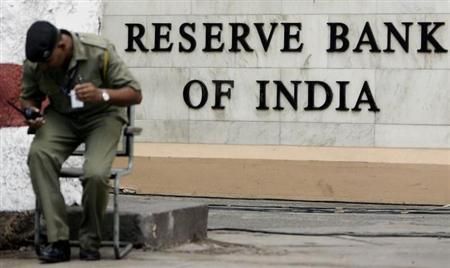The RBI Governor recently cautioned that the challenge was to avoid a wage-price spiral.

The Reserve Bank of India, as expected did not tinker with rates at its fifth bi-monthly monetary policy review on Tuesday.
Now, analysts would be looking for clues on how many more cuts the central bank would be ready to accommodate and what RBI has to say about its preparedness to face financial market volatility after the US Federal Reserve starts hiking its rates, possibly as early as in a fortnight.
The language of the policy and Governor Raghuram Rajan’s statements will be weighed to gauge the confidence level in meeting the inflation milestones set out by the central bank in previous reviews.
Through four rate cuts, the latest being a 50-basis-point one on September 29, RBI has brought down the repo rate to 6.75 per cent from eight per cent in January. One basis point is a hundredth of a percentage point.
Here are some pointers the central bank will likely discuss, and their potential implications:
Inflation
While the inflation trajectory is following the path the central bank expected it to follow, latent demand remains high. Inflationary expectations are elevated, led by food prices, even as crude oil and other commodity prices have cooled, to India’s advantage.
Prices of pulses pushed Consumer Price Index-based inflation to a four-month high of five per cent in October.
Rajan recently cautioned the challenge was to avoid a wage-price spiral.
While RBI’s expectation of six per cent inflation by January is achievable, containing it around five per cent by the end of FY17 and four per cent in the year after will not be easy.
Growth
The second quarter gross domestic product growth was 7.4 per cent, higher than seven per cent in the first quarter. To expand growth, the central bank might have to extend help through further rate cuts.
However, banks’ reluctance to pass on previous cuts is a hindrance.
Rate cuts by banks
Despite aggressive rate cuts by the central bank, commercial banks have not really passed on the rates to customers, inviting sharp criticism from the RBI governor.
In his review on September 29, Rajan had said the central bank’s stance would continue to be accommodative but the focus of monetary action for the near term would 'shift to working with the government to ensure that impediments to banks passing on the bulk of the cumulative 125-bps cut in the policy rate are removed'.
This policy will likely spell out how much of those impediments were removed.
Government finances
The central government has said it will contain its fiscal deficit to 3.9 per cent of gross domestic product in 2015-16, and progressively bring it down to 3.5 per cent and three per cent in the next two years.
Data released on Monday showed the government had managed to remain on track, as the deficit reached 74 per cent of the full-year target during April-October, against 89.6 per cent in the corresponding period last year.
However, the recommendations by the Seventh Pay Commission, if accepted, might put pressure on the numbers as the planned pay hike to government employees equals 0.68 per cent of GDP. State governments are also likely to strain their finances while giving good hikes to their employees.
This might upset the overall deficit figures and would be inflationary.
Volatility in markets
The US Federal Reserve is expected to raise interest rates in December, for the first time since June 2006.
Already, foreign portfolio investors are liquidating their holdings from emerging markets and the impact has been felt in India as well.
The rupee touched a 26-month low against the dollar on Friday and bond yields have spiked to reach a spread of about 100 basis points above the repo rate.
RBI had intervened in the market to strengthen the rupee and such intervention could become a regular feature in the coming months.
This would strain the central bank’s foreign exchange reserves and all the dollar purchases would infuse an equivalent amount of rupee liquidity in the market which, again, would be inflationary.
However, much also depends on how China tackles its domestic slowdown.
In the past, China had readjusted its currency band and that led to all Asian currencies falling sharply to maintain export competitiveness.
In response to the yuan’s two per cent devaluation, the rupee depreciated three per cent.
Any move to fight this depreciation will not only hurt India’s exports, but also add more to the depreciation and will upset RBI’s inflation targeting mandate.
The policy on Tuesday may spell out the central bank's strategies to address these two immediate global concerns.










